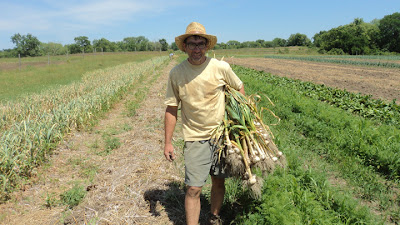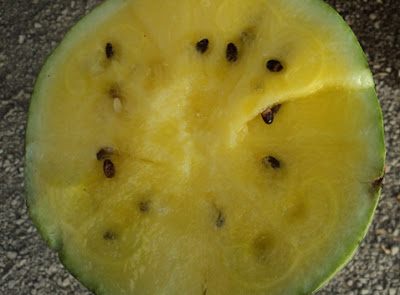Six weeks in and you either are full of good, fresh, Missouri vegetables or you have enjoyed some and have a fridge filled with the rest. Either way, we are here to help. While what we give you may seem like a lot, it doesn’t take much to make a few tasty dishes and use up a good portion of your share.
There are many dishes that use 2, 3 or 4 share items and give you a good dose of flavor and nutrition, the kind you can only get from eating fresh food. In cooking it is all about the ingredients, and your share gives you a good start on any dish.
Last night we made a simple pasta dish (recipe follows) that included onion, zucchini, chard, green garlic and oregano, with a garnish of parsley. It is a dish that you can substitute with most whatever ingredients you have on hand. Rebecca says more vegetables, less pasta in the mix.
The idea of the dish is to toss your vegetables with some pasta to make a warm dish. The leftovers are then a delicious cold salad that you can jazz up with things like nuts, dried fruit or dressing. If pasta isn’t your thing, it goes well with grains like rice or quinoa.
Pasta Tossed With Sauteed Vegetables
Ingredients:
1 large or 2 medium summer squash/zucchini
1 large onion
1/2 bunch Swiss chard
3 green garlic
1-1/2 tbsp dried or 2 tbsp fresh oregano
2 tsp salt
4 tbsp olive oil
1/2 cup grated cheese
1 lb pasta
Method:
Start the pasta first so that it is ready when the veggies are done. We used a penne pasta, a type of macaroni.
Cut the stem out of the chard and chop into small dice. Cut leaves into thin pieces. Cut squash lengthwise, and scoop out the seeds in the cavity with a spoon and discard. Cut zucchini into chunks. Trim the top and bottom off the garlic and chop the white part.
Put 2 tbsp olive oil in a large frying pan and cook the chard stems, onion and green garlic until the onions become soft. Add the zucchini and salt, and cook for 3 more minutes. Add the chard and cook for 5 to 10 minutes, or until the chard is tender.
Mix the pasta, cheese and vegetables in the pasta pot while adding 2 tbsp olive oil. Garnish with parsley.
Parker Farms Tour
Rebecca and I enjoyed a drive in the country and a visit to a farm last Saturday. It was windy and warm at Parker Farms, and you felt like you were on the edge of the prairie. Tom, Paula and the 4 Parker girls were wonderful hosts.
A hearty pot luck started the afternoon, and then a tour of the chickens, sheep, hogs and cattle. Their operation is top-notch, and we feel fortunate to have farmers like them providing us with our meat and eggs.
 |
| Parker Farms Tour 6/9/12 |

















